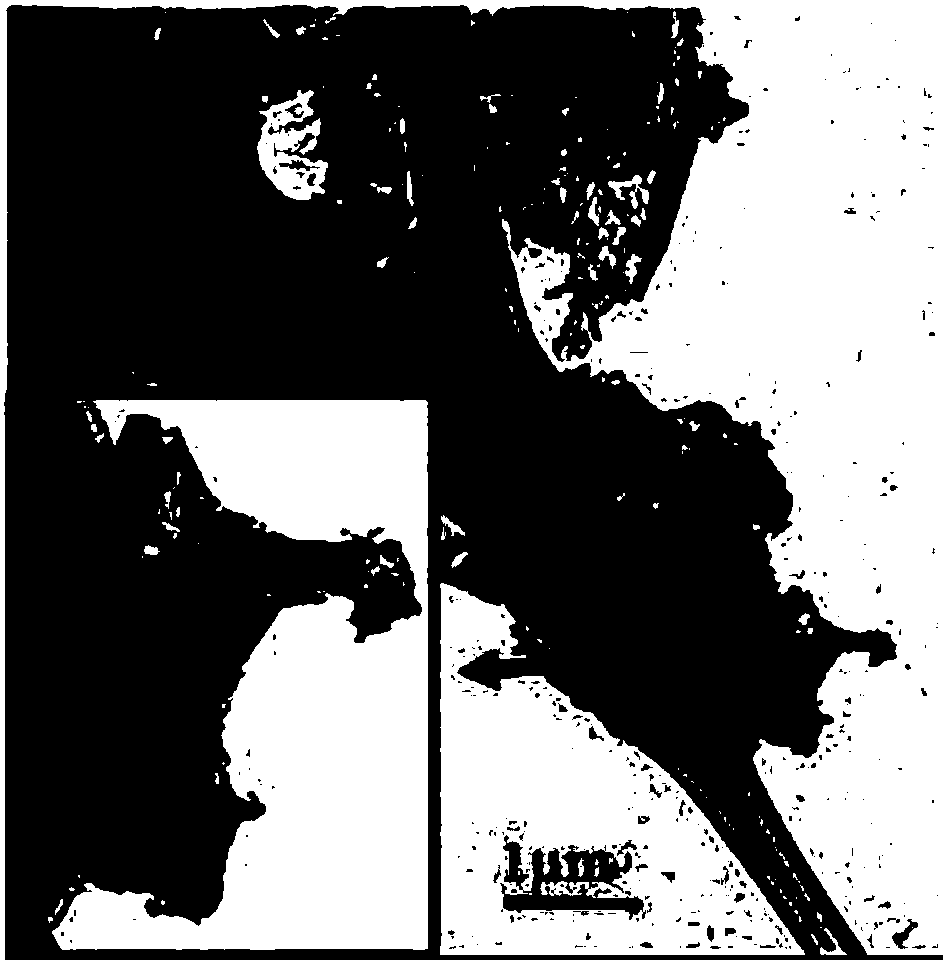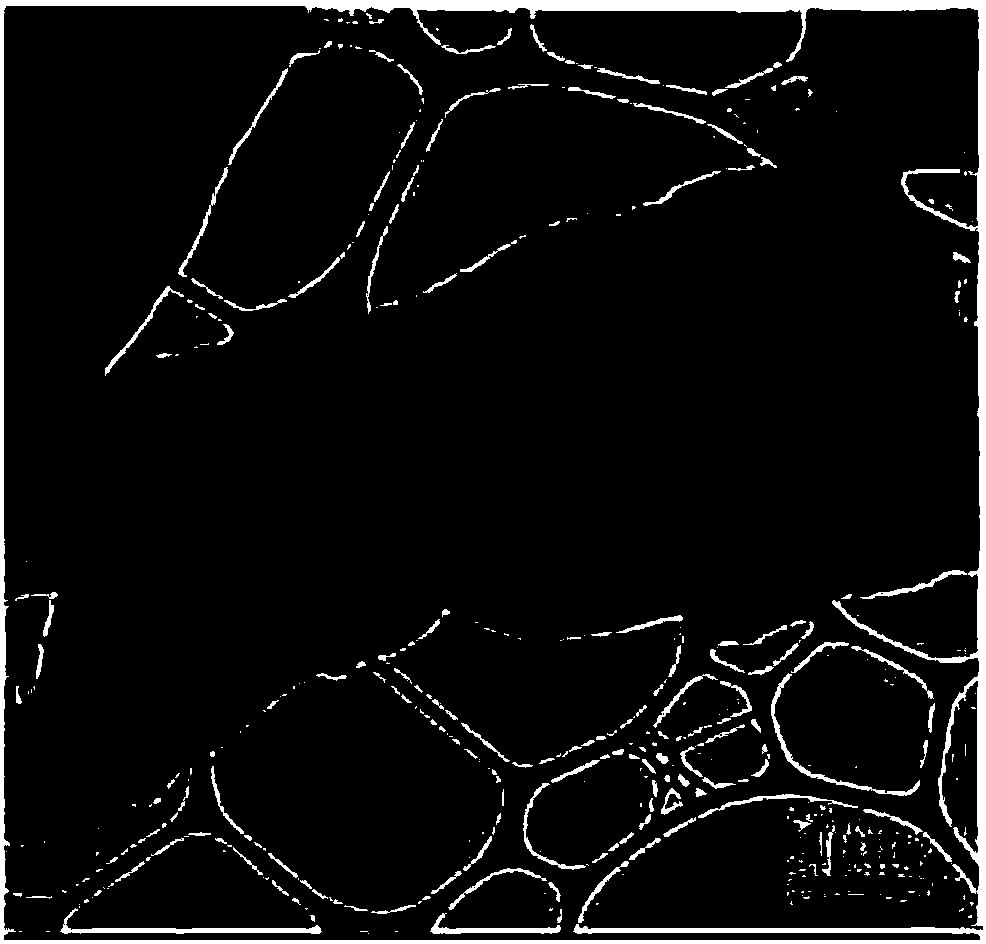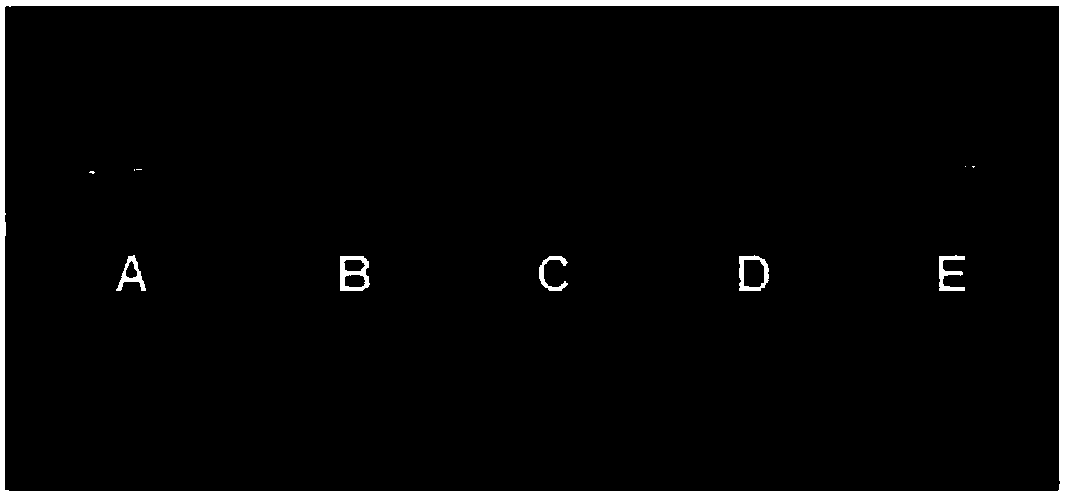Modified polyvinylalcohol graphene, preparation method and application thereof
A polyvinyl alcohol and graphene technology, applied in the field of materials, can solve the problems of graphene output and overall quality limitations, and achieve the effects of wide application and promotion, easy process and simple preparation method
- Summary
- Abstract
- Description
- Claims
- Application Information
AI Technical Summary
Problems solved by technology
Method used
Image
Examples
Embodiment 1
[0036] Example 1: mPVOH stripping graphene and stripping effect 1
[0037] Graphene was prepared by dispersing 25 g of natural graphite and 8 g of Kuraray LPTC161 in 1 L of deionized water, using a high speed steel mixer (24.000 rpm) with 28 mm diameter blades to generate the shear force and hydrodynamics required to exfoliate the graphite into graphene pressure. After a mixing time of 100 min, the dispersion was centrifuged at 4000 rpm for 60 min to remove large particles and unexfoliated material, and the supernatant was collected and analyzed to evaluate the quality and size of the obtained graphene particles. Finally, the resulting supernatant was lyophilized overnight to remove water. The resulting material is foamy mPVOH-rich graphene, which is finally washed repeatedly to remove mPVOH and stored at room temperature.
[0038] The prepared multilayer graphene dispersion was dispersed in deionized water at a ratio of 1:100, and added to a transmission electron microscope...
Embodiment 2
[0039] Example 2: mPVOH stripping graphene and stripping effect 2
[0040] Graphene was prepared by dispersing 25 g of natural graphite and 8 g of Nippon Goeshei OKS 6026 in 1 L of deionized water. A rotor-stator high shear mixer (at 12000 rpm) was used to generate the shear required to exfoliate the graphite into graphene. After a mixing time of 100 minutes, the dispersion was centrifuged at 4000 rpm for 60 minutes to remove large particles and unexfoliated material. The supernatant was collected and analyzed to evaluate the quality and size of the obtained graphene particles. Finally, the resulting supernatant was lyophilized overnight to remove water. The resulting material was foamy mPVOH-rich graphene, which was stored at room temperature after repeated washing to remove the polyvinyl alcohol.
[0041] figure 2 showed TEM images of several-layer graphene particles consisting of 5–10 layers reaching a length of 4.9 μm. A carbon mesh can also be seen below, indicating...
Embodiment 3
[0042] Example 3: mPVOH exfoliated graphene effect 3
[0043] Dissolve 20 grams of Synthomer Alcotex 552P in 100 milliliters of methanol, add 1.4 grams of modifier VEC, add initiator BPO 0.2 and stir at 90 degrees for 6 hours, then add methanol to purify and distill to obtain the synthesized mPVOH, which has higher crystallinity Spend. Dissolve 10 grams of expanded graphite and 1.5 grams of mPVOH in 500 milliliters of distilled water, use a high-speed stirrer to stir at 10,000 rpm for 90 minutes, then centrifuge the liquid at 4,000 rpm to obtain the supernatant and centrifuge several times, then The samples were washed repeatedly to obtain exfoliated graphene.
PUM
 Login to View More
Login to View More Abstract
Description
Claims
Application Information
 Login to View More
Login to View More - R&D
- Intellectual Property
- Life Sciences
- Materials
- Tech Scout
- Unparalleled Data Quality
- Higher Quality Content
- 60% Fewer Hallucinations
Browse by: Latest US Patents, China's latest patents, Technical Efficacy Thesaurus, Application Domain, Technology Topic, Popular Technical Reports.
© 2025 PatSnap. All rights reserved.Legal|Privacy policy|Modern Slavery Act Transparency Statement|Sitemap|About US| Contact US: help@patsnap.com



